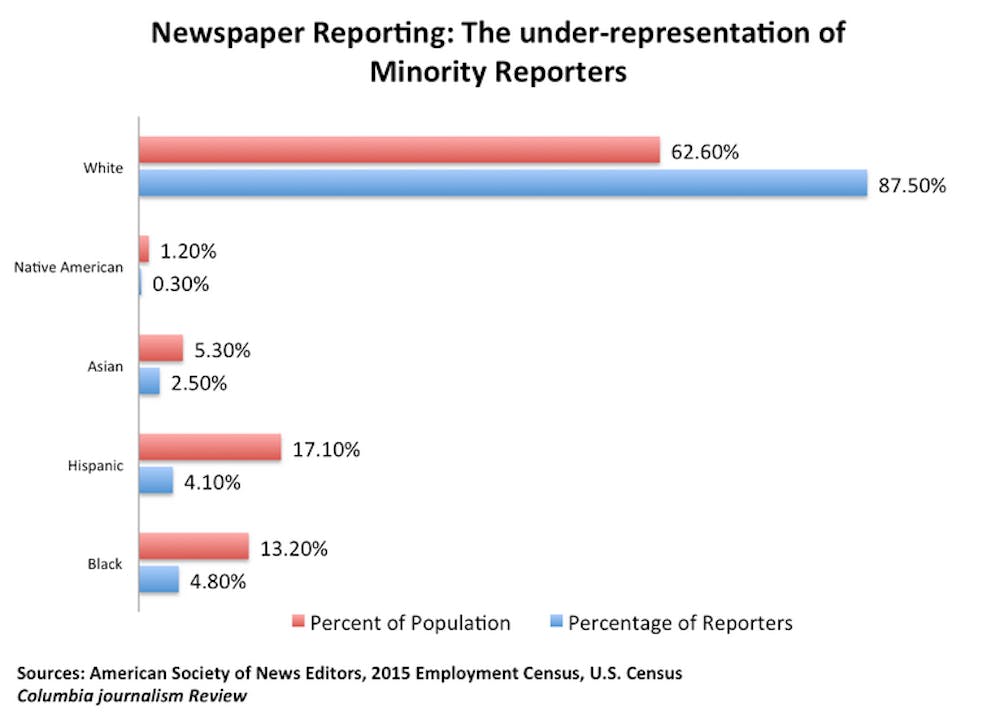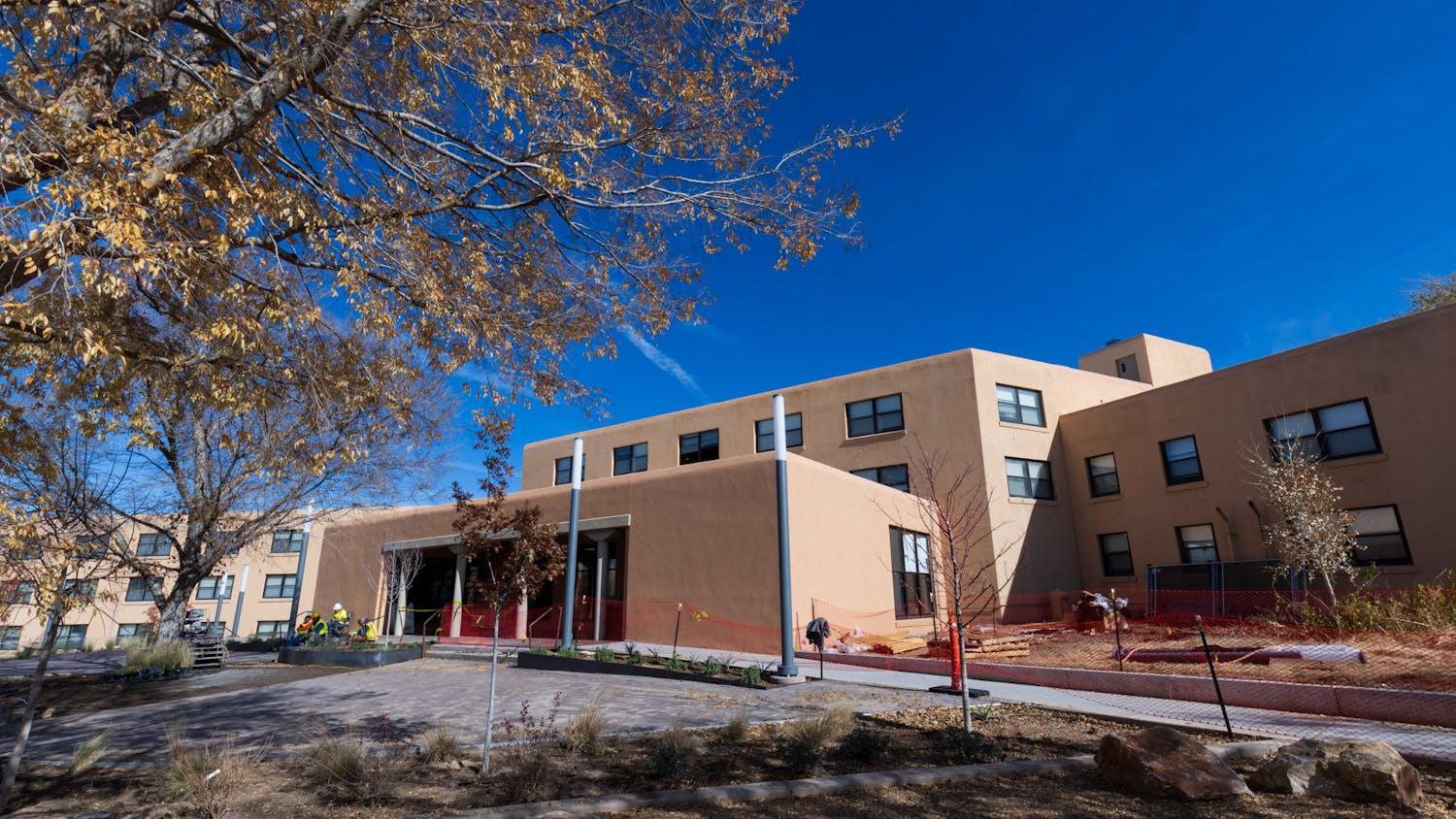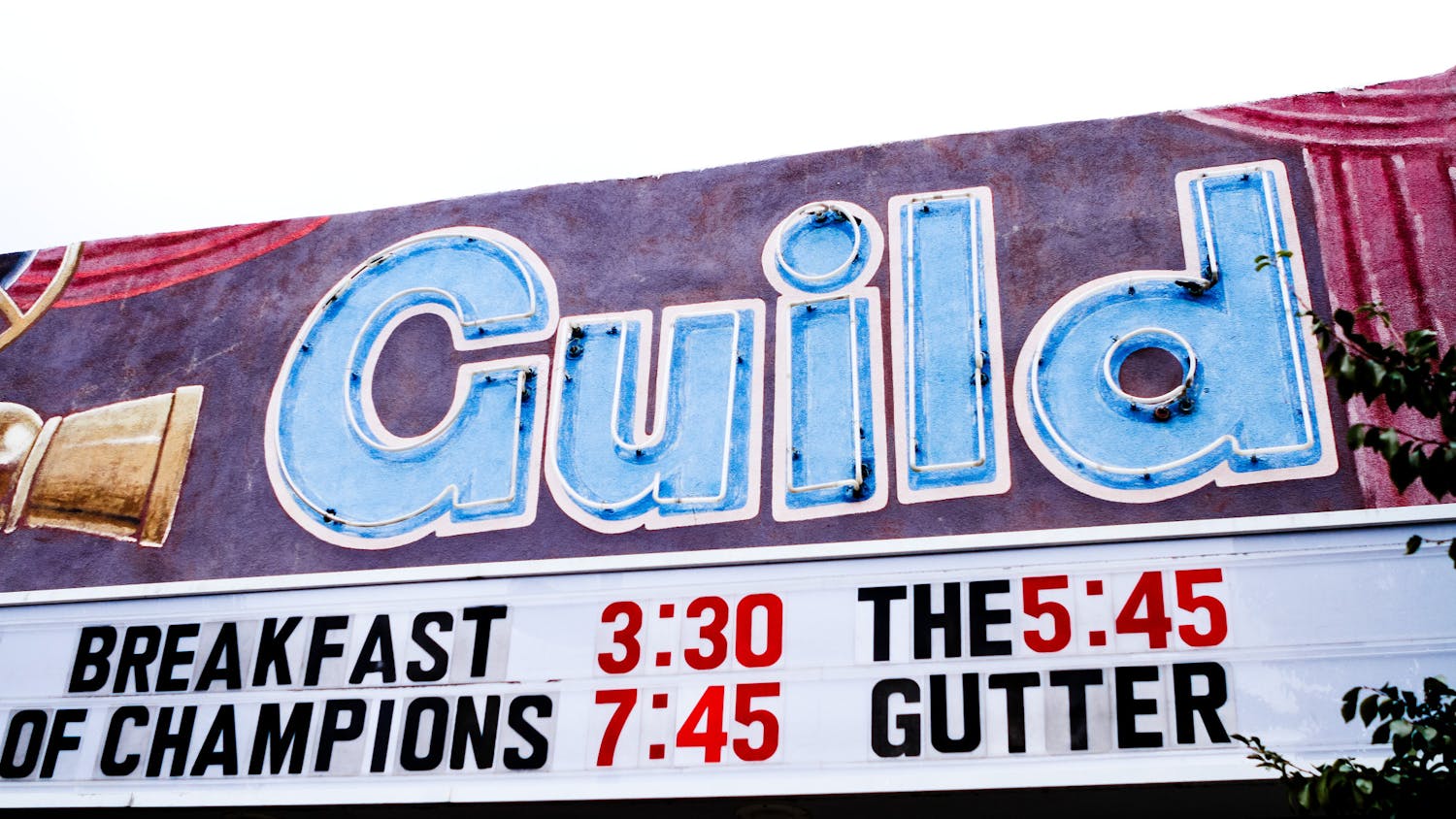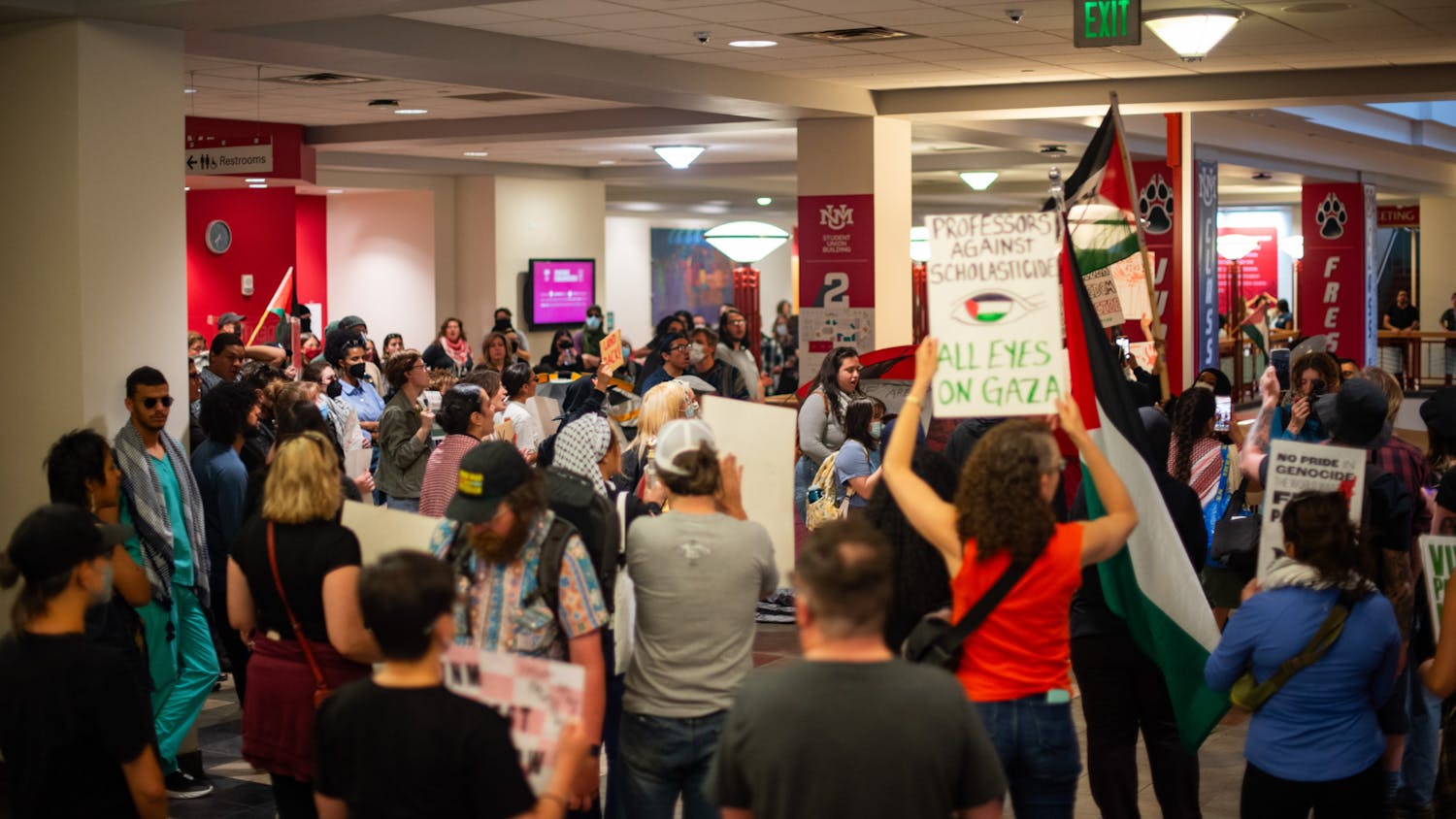Candelario Vasquez was in his freshman year at Florida State University when he first read the stories that made him want to be a writer who centered his work around community issues. The majority of the stories he had to study were about British writers.
He said he felt like the stories the professor gave him for analysis never really spoke to him, he said.
“I didn’t grow up reading a lot of minorities of color, so it was hard for me. I couldn’t relate to the writings in any way. I didn’t have a mentor, and I knew it was going to be hard for me to find a mentor of color,” said Vasquez, an FSU communication studies and English literature graduate who spent time teaching community media at Encuentro, a non-profit organization in Albuquerque.
Employment in daily U.S. newspapers reflects what Vasquez said
. The total projected workforce, according to census data collected by the American Society of News Editors, stands at 32,900 for 2015. Only about 13 percent of those are minorities — including Native Americans, Hispanics, Asian-Americans, African-American and multiracial groups — employed in daily newspapers.
Those numbers have slightly increased since 2012, when the overall percentage of minorities in the U.S. population was 36.6 percent and the number of full-time minority journalists was 8.5 percent, according to a study by The American Journalist In The Digital Age.
At UNM, Hispanics are the leading ethnicity in students pursuing a degree in journalism and mass communication with 48.5 percent, which is on par with University-wide enrollment numbers, according to UNM officials.
However, other minority groups are still comparably underrepresented. African-American, Native-American, Asian-American and multicultural students make up less than 13 percent of the student population, according to UNM enrollment documents.
Because the numbers of minority journalists in the workforce are small, students like Kevin Maestas, a junior journalism major, say they are worried, but hopeful.
“It’s just offering that person a different perspective allowing people to see that, minus skin color and dialect and the language you’re speaking, you’re also experiencing things similarly,” he said.
Hispanics comprise a total of 1,377 employees working in a newsroom in 2015, while African-Americans make up 1,560, Asian-Americans are 926, multiracial groups have 185 and Native-Americans came in lowest at 118, according to the ASNE 2015 census data.
“Now that I’ve been going to the journalism school here at UNM, I find that sometimes it’s hard for a minority to be in this field because I feel like journalism, on many occasions, is more for a privileged type of student,” said Isaac De Luna, KLUZ-TV newscast director and senior journalism major.
Get content from The Daily Lobo delivered to your inbox
In smaller news outlets, the numbers are worse for minorities. Newspapers with a circulation of less than 50,000 usually have no minority journalists working in the newsrooms, according to ASNE 2015 census data.
Vasquez said social media is the platform increasingly utilized in journalism that could be the key to a more diverse representation.
“We need to focus more on social media to give more minority journalists a chance to succeed. We need to give them more of a platform,” he said. “But that depends on us.”
But while the statistics could provoke uncertainty, Maestas said these numbers just prove that this is the field for him.
“There’s always this uncertainty in the workforce, regardless of whatever kind of job that you’re going into, and hopefully my addition to this field of minorities will make this thing rise,” he said.
John Acosta is a student in the Communication and Journalism Department.






